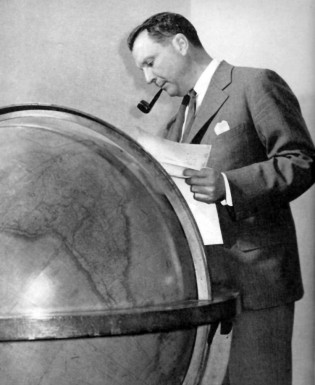The wider or thicker the brown band (which is usually in the middle), the milder the winter is expected to be.
Last winter the wooly worms were solid black, predicting a cold, snowy winter - which is exactly what we got.
This year the reports are a little more mixed, with a little more brown being seen on the wooly worms - although the reports are mixed. The official Wooly Worm web site, hosted by the Wooly Worm Festival held every October in Banner Elk, NC, has a more detailed and fine-grained worm-based forecast. It says:
Checking the Farmer's Almanac, we find a similar prediction:
Based on the width and order of the caterpillar's black and brown stripes, Jack's forecast for the coming winter (starting with the winter solstice on December 21) says there will be cold and snow through the holidays and on into late January. There will be a bit of a warming trend in the last week of January and first week of February with a chance for ice. February will continue cold, becoming extremely cold in March. The weeks leading to the spring equinox on March 20 will see the winter close with lots of snow.
Perhaps the Farmer's Almanac uses wooly worms? I certainly wouldn't be surprised.Old Man Winter doesn’t want to give up his frigid hold just yet, but his hold will mostly be in the middle of the country.
According to the 2010 Farmers’ Almanac, this winter will see more days of shivery conditions: a winter during which temperatures will average below normal for about three-quarters of the nation.
A large area of numbingly cold temperatures will predominate from roughly east of the Continental Divide to west of the Appalachians (see map). The coldest temperatures will be over the northern Great Lakes and the Upper Peninsula of Michigan. But acting almost like the bread of a sandwich, to this swath of unseasonable cold will be two regions with temperatures that will average closer to normal—the West Coast and the East Coast.
Another source says the wooly worms in West Virginia are all black. Perhaps the wooly worms are regionally precise? I have also heard that some all black ones were seen around here, as were some with a thick brown middle band, which indicates a warm spell in the middle of winter.
Comparing with scientific sources, the UAH global temperature anomaly shows a global average slightly cooler than last year for the last few days, but pretty close to the average for the last several years. This gets us back to the basic issue that local climate and global climate can be very different things, and we don't necessarily know exactly what that means. Last winter was one of the coldest in the modern record in the US, Europe, and China, but was warmer than average globally, because there were large areas in the higher latitudes (Northern Canada, South Pacific) that were significantly warmer than average.
So far it feels colder than usual around here and it isn't even winter yet. The forecast for tonight is 15 degrees F. Tomorrow it is supposed to be 13 deg. F. In many recent years past we have had shirtsleeves weather in December - but not in the last 3 or 4 years. Apparently it isn't just me: there have been a record number of new weather records this month, mainly for low temperatures and snowfall: check out this chart.
So what can we expect for the rest of the winter? (Actually, "the winter", since it is still fall.) According to the wooly worms it will continue frigid until at least late January.

